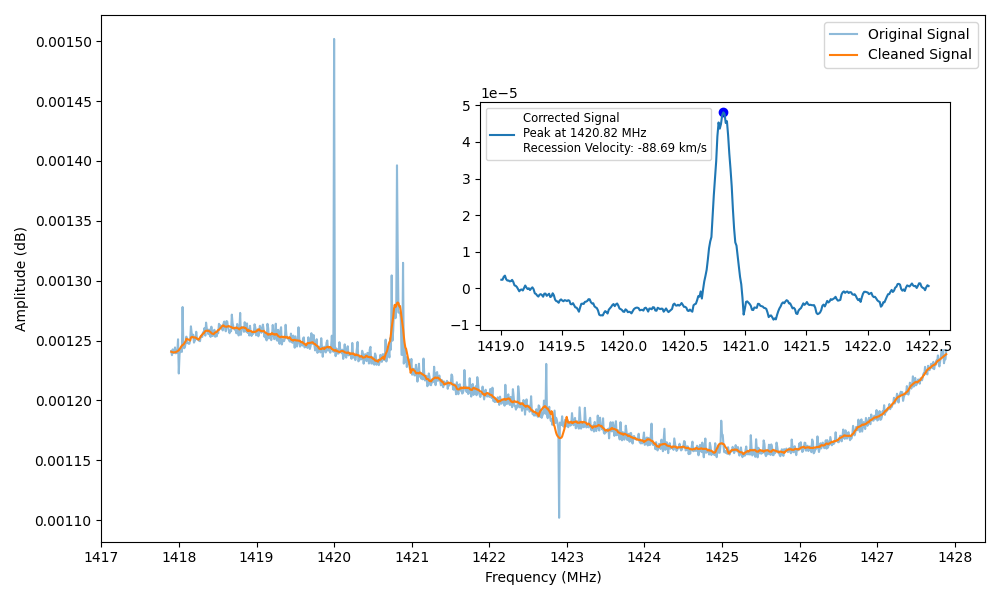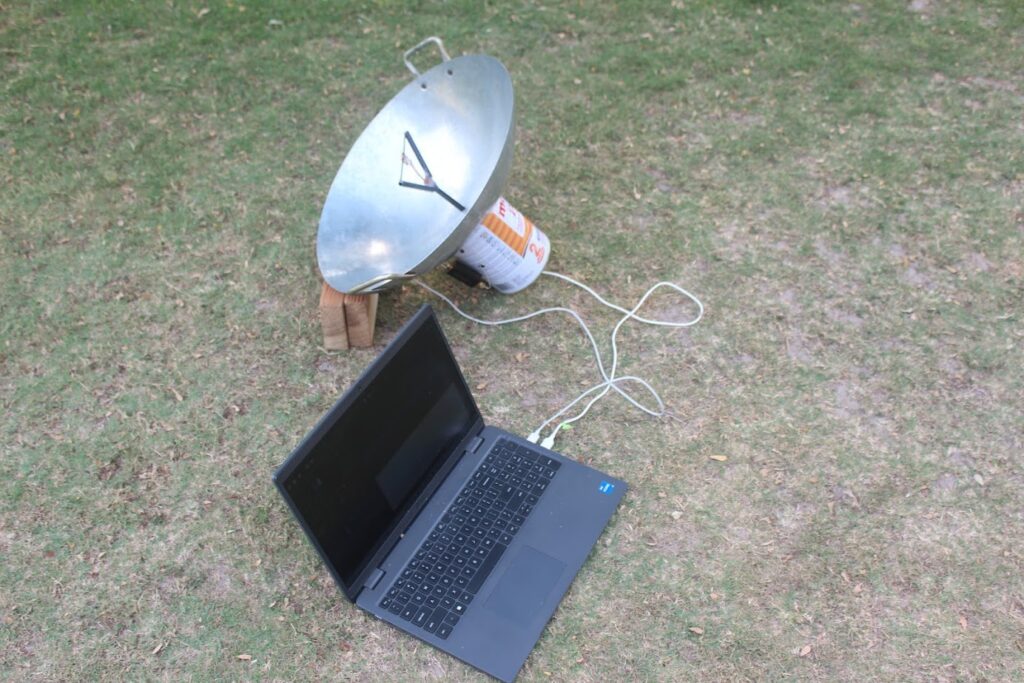The 21-cm hydrogen line from the Milky Way
Recent advancements in radio observation have empowered astronomers to overcome obstacles presented by light pollution in urban areas. This current study delves into the utilization of karahi based antennas as a novel approach to observing celestial phenomena, with a specific focus on the emission of galactic neutral hydrogen. By capitalizing on radio waves’ exceptional ability to penetrate urban noise, in conjunction with advanced digital signal processing techniques and Software-Defined Radios (SDRs), precise measurements of galactic emissions can be attained. The paper provides comprehensive insights into the design, construction, and optimization of karahi antenna, elucidating engineering considerations and addressing practical challenges encountered throughout the project. Through a combination of simulation studies and field observations, the study showcases the potential of karahi antenna in radio astronomy applications, thereby offering a promising avenue for facilitating accessible astronomical research and promoting public engagement efforts. The basic idea derives from [https://arxiv.org/abs/2309.15163].


Lab Resources
Download the required data files from the link below. Be sure to extract them and save them somewhere on your Google Drive!
Once you open the Colab notebook link above, be sure to click File -> Save a copy in Drive before beginning your work! This will allow you to save your changes.
- Lab Manual
- Google Colab Notebooks: Analysis, File Merging
- Software
Further Readings
- Further investigations with the Karahi antenna for galactic hydrogen measurement, work done by Mirza Sarim Ahmed Baig with Astrolab’s radio telescope, Summer 2024
- Wok-the Hydrogen:
Measurement of Galactic Neutral Hydrogen in Noisy Urban Environment Using Kitchenware, Fung, L. W. H., Wai, A., Lau, K., Chan, K. H., & Shing, M. T. (2023). - Practical methods for noise removal: Applications to spikes, nonstationary quasi-periodic noise, and baseline drift, Feuerstein, D., Parker, K. H., & Boutelle, M. G. (2009). . Analytical Chemistry, 81(12), 4987–499
